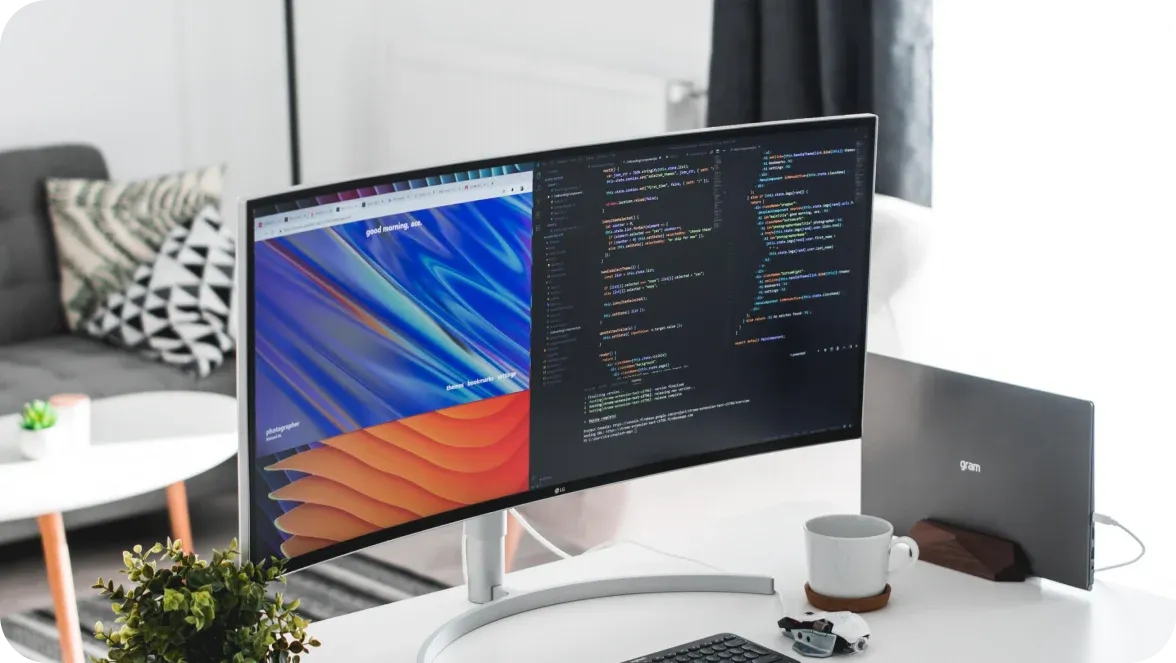
According to Forbes Global 2000 list, Amazon is the sixth-largest company and the largest retailer in the world in 2022, with $492.82 billion in sales. And it’s no surprise that many companies want to reach the same heights and have a website like Amazon: the site is user-friendly, fast, always on top of emerging trends and consumer needs, and sells just about anything under the sun, from electronics to books to shoes to food.
So, how much does it cost to build a website like Amazon? It might be intriguing, but our practice shows it’s better to understand how much it will cost to add the same functionality and meet customer needs as accurately as Amazon does. When people want to develop an online shopping site, they think about all of the things that come together in the Amazon shopping experience. That’s what they really want to replicate in their own business.
Amazon is composed of hundreds of individual websites, written in different programming languages and built on different technology stacks. So, the DigitalSuits team will share useful features here and give you an average estimate based on our work with e-commerce clients across all industries over the years.
Key features of an e-commerce website
Among all, the exact cost of building an Amazon-like website depends on the complexity of the online platform you plan to use. You can design an MVP to check the basic functionality and find your potential customers. Alternatively, you may want to build a simple site with several features and enhancements. Or you may go for a more complex e-commerce site with advanced features like live chat and email marketing tools.
All these three websites will be different in terms of functions and costs.
MVP
An MVP, a minimum viable product, is the cheapest way to test your idea. Such a product is mainly built to create a basic workable solution to a customer’s problem, collect their feedback, and use it to improve the app or website in the next stage. In practice, an MVP can even be a prototype of your product or just a website that sells one item costing you not more than $1,000.
The key features of Amazon-like MVPs include a product catalog, reviews, user feedback, and a purchasing option. In this regard, you should find a hosting domain, choose the e-commerce development platform (it can be Magento, Shopify, or BigCommerce), and select a payment getaway integration.
A medium website
In contrast to MVPs, medium websites are scalable because they offer more functionality and features. Still, they maintain a simple design and have a limited number of sophistications and customizations. If you have already tested your idea with an MVP, this is the next step before investing in large-scale development.
So, what is the cost of developing a website like Amazon of medium complexity? The raw estimate is in the $15,000 - $30,000 range, depending on the number of pages required. The elements that compose this price include a homepage, product listings, product pages, product integration, one-click purchase, and switching between seller and buyer account types.
An advanced website
Complex websites may have the same number of features as medium websites, but each of them will be more sophisticated and personalized. Such platforms may also need content creation services, video production, complex 3D modelling for product photos, and other industry-leading tech trends.
Building an advanced marketplace like Amazon usually starts from $50,000 and more, depending on the number of operating platforms and their complexity. The cost of running a website like Amazon is also higher, calling for additional work by developers to allow for content customization and platform maintenance.
Challenges of building a website like Amazon
Having a site like Amazon is no easy task. Due to its high cost, building website like Amazon should be an informed decision that takes into account all the possible issues that may arise on the way, including the existing completion, technology expertise, and a clear understanding of your target audience and its pain.
You need a competitive infrastructure, the right technology, and clear customer understanding to succeed.
Competition in the niche
The e-commerce market is heavily crowded with competition. A company can't just show up with a site and expect to make it big; you need to differentiate yourself from your competitors, which could be difficult if there are already popular brands in the niche.
To help you stand out, we recommend searching for niche products and focusing on providing new products or services that other companies might not offer. That way, people will be more likely to notice your brand and come back for more. Then, you can start upselling your core product with similar items that are already quite popular in the market—that will be easier in terms of competition.
The choice of the right technology
If you decide to go ahead with building a website like Amazon, choosing the best technology is crucial in the long run. We recommend using enterprise-level solutions because they have features such as scalability and data integrity that provide greater security when dealing with large amounts of information.
Also, it’s worth going for headless commerce, an approach that decouples the frontend from the backend and lets you apply changes to content and design without touching the backend part. This technology makes it easier to advance your MVP or medium website with greater customization and personalization, along with other perks.
Detemine a customer profile
Knowing your customers well might be the hardest part of building your e-commerce website. What type of people visit your site most often? How old are they? What do they want to buy from you? Knowing this information will help you choose the appropriate platform and tools.
Besides, standards related to customer experience should be taken into consideration too. Working on customer experience is a never-ending journey, calling on your constant attention to things like navigation optimization, checkout simplification, website speed optimization, and adding immersive features.
Typical costs to create an e-commerce website
As you can see, the price of the website varies depending on what you want your site to do and how much customization you want. We recommend starting with the basic MVP and then steadily advancing the website, depending on the customer feedback, your tech capabilities, and the features your competitors have adopted.
A basic site with fewer bells and whistles can be created for less than $50,000; one with many integrations or a more customized design could cost upwards of several thousand or even millions of dollars.
The typical factors that influence the price of an e-commerce website include:
A number of features: The basic website costs more than an advanced one, and each new feature increased the price in a different way.
Customization level: Customized experiences require extra design and coding work.
Functionality complexity: Amazon-like websites have separate admin and client portals, and this factor changes the answer to the question, “How much would it cost to build a website like Amazon?”.
Software development rates: Developers from the USA and Israel are more expensive than their colleagues from Ukraine and Brazil, so you can save a lot by finding a reliable tech partner among Ukrainian IT companies.
Team composition: The number of people involved in the project changes the final price.
For extra information, check out our guide on how to create a successful e-commerce store.
How to generate sales with an Amazon-like website
Once you decide to invest in your e-commerce project and are ready to pay the cost of running a website like Amazon, you expect a return on this investment in terms of greater sales. But as our experience shows, getting the Amazon replica doesn’t mean it will automatically bring you the same revenue as Jeff Bezos.
To boost sales, you can use several tricks successful e-commerce stores do:
Create a sense of urgency: Display the availability or scarcity of the items on your site to make it clear that limited quantities are available for purchase. Consider using countdown timers on products as well. They create anxiety that makes people buy fast because they fear missing out on something.
Display social proof: People like the feeling of community and prefer buying things others like. So, show what other people have said about your product: if other customers are happy with it, this will reassure new customers and make them more likely to buy from you.
Use upselling strategies: Encourage shoppers to add extras and accessories to their cart while they're browsing. For example, these can be add-ons like phone chargers, batteries, protective cases or power banks. But make sure that products included in this group meet customer needs.
Are you ready to pay the cost of building an Amazon-like website?
So, if you want to know how much a site like Amazon cost to make your own store, our answer is, “At least $50,000.”
But as we’ve explained, the reality shows you don’t need a second Amazon website and this sum immediately. The smarter approach is to start building an Amazon-like MVP that offers a unique product to meet your first customers, and then improve the ranks, technologies, and customer experience in your website depending on the market reaction.
If you want to build an Amazon-like website that will resemble the largest global retailer and generate sales, contact our team! Just share your project requirement, and together, we will find out a detailed breakdown of prices and technologies that will suit your particular e-commerce needs!







































Was this helpful?
0
No comments yet